
|
Laundry-VR ™The cutting-edge professional digital tool to transform laboratory washing resultsinto consumer-centric discoveries, insights and brand associations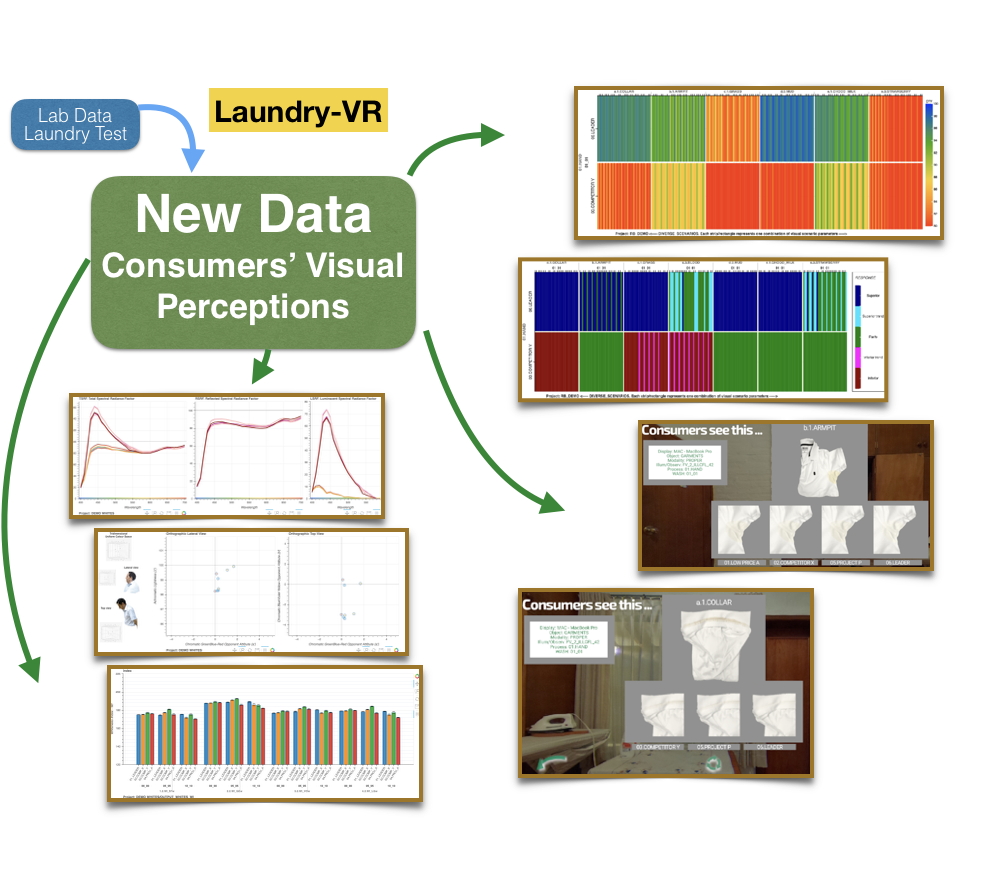
|
|

|
Frequently Asked Questions (FAQs) |
|
| From
lab to consumers From the input lab data,
Laundry-VR generates new data
representing consumers' visual
perception of benefits and
non-benefits in cleanliness,
whiteness, and colour care. To
be close to the actual visual
scenarios, it is essential to
consider not-new, white, and
light-coloured garments.
Remanent stained areas will be
perceived differently in
relation to the context pending
of the garment colour, i.e., in
yellowed fabrics, yellowish
remanent stained areas will be
perceived as cleaner than in
other coloured garments. 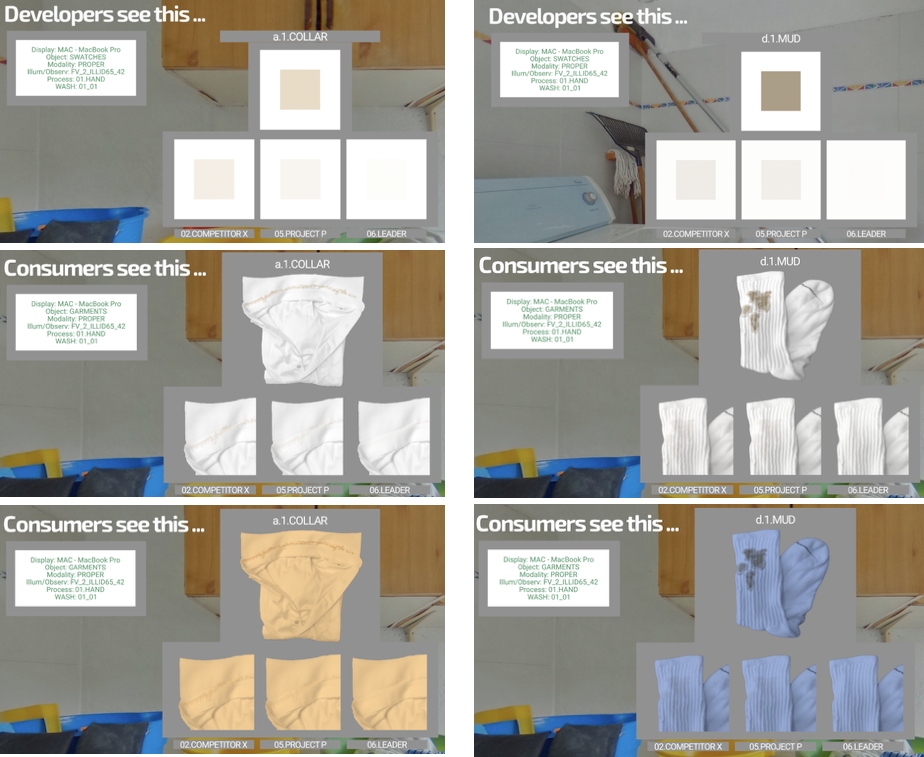 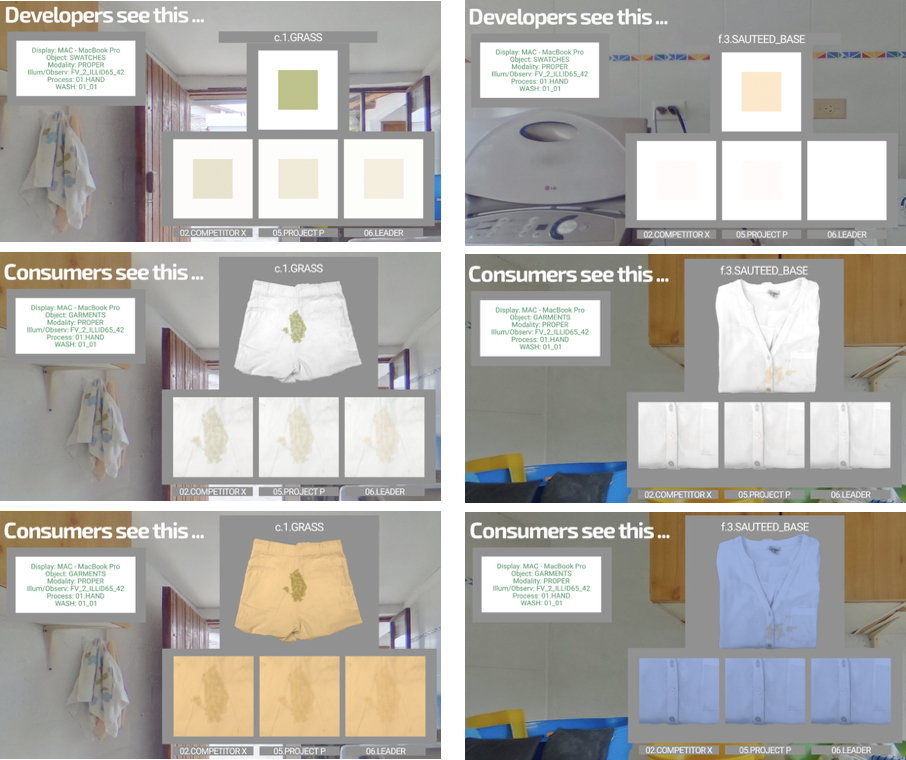 Contact us to see a demo or to transform your lab readings. |
||
| SRI-VR.
What is new? The new Stain Removal Index in
Virtual Realities (SRI-VR) is
the unique feature of
Laundry-VR. It combines
cleanliness lab readings with
consumer-relevant garment's
irregularities/textures and
dinginess levels for the first
time in the industry. Now
shadows, creases, bottoms,
seams, and redeposition of body
and other soils are considered
to quantify cleanliness
perception. How is it calculated? Four (4) different consumer-relevant garments are rendered, each with a different stain location and dinginess level. The remanent stained area and its proximal field are characterised by the appropriate RGB values, which are transformed to colorimetric attributes and then the SRI is calculated. See the below graphs. Main implications:
Graph 01. Mud stain on socks: 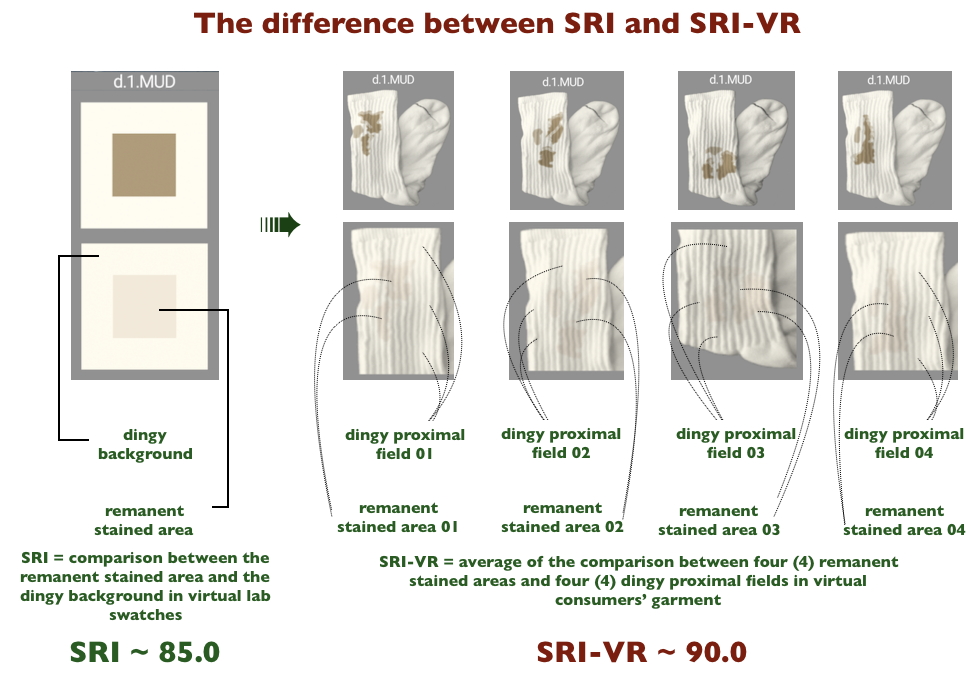 Graph02. Collar stain on shirt: 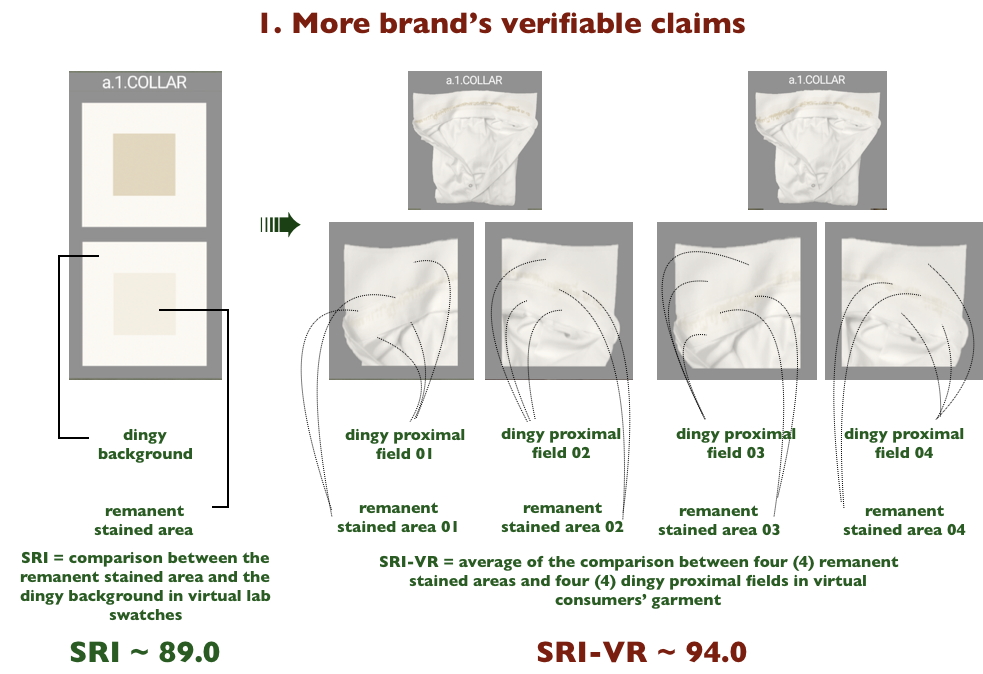 Graph 03. Armpit stain on T-shirt: 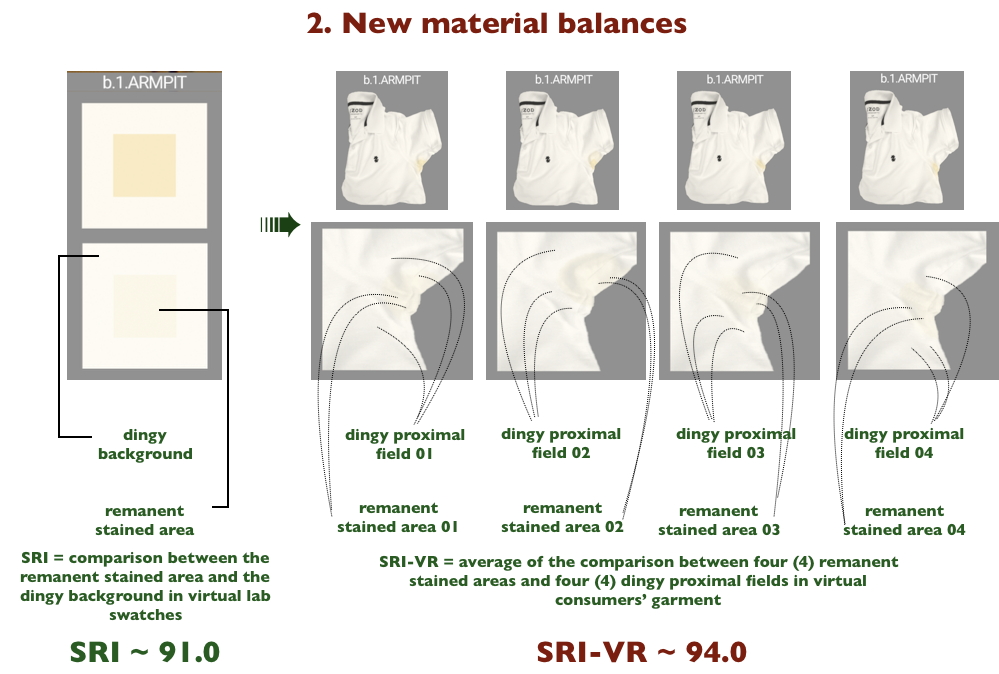 Contact us to see a demo or to transform your lab readings. |
||
Laundry-VR
terms and definitions
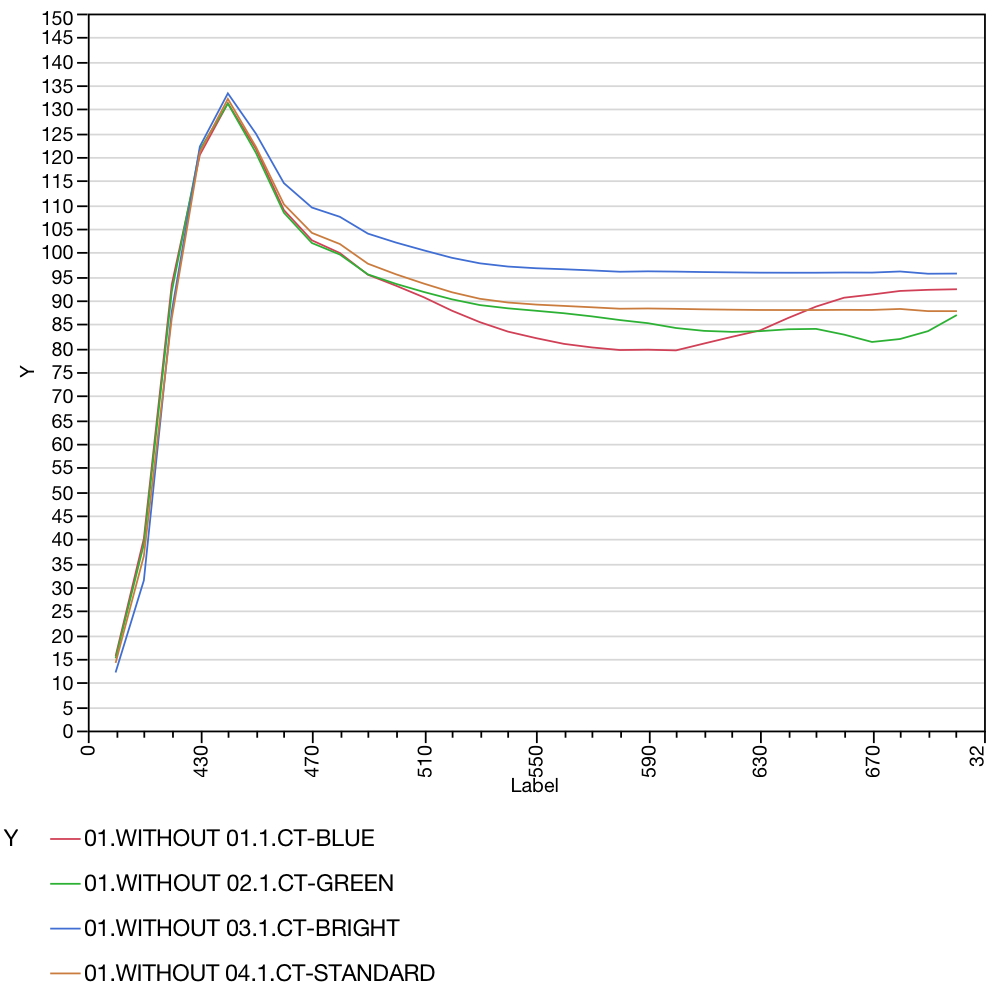
|
||
Home | Contact Us
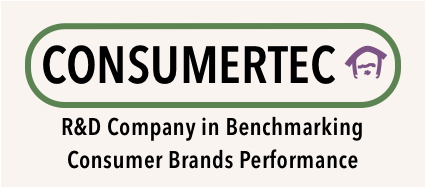

 It transforms limited laboratory
washing results into ample
washing results in diverse
market relevant visual
scenarios, where garments are
washed, stored or used; with the
highest practical fidelity.
Transform lab data into new
consumer's perception data.
It transforms limited laboratory
washing results into ample
washing results in diverse
market relevant visual
scenarios, where garments are
washed, stored or used; with the
highest practical fidelity.
Transform lab data into new
consumer's perception data.